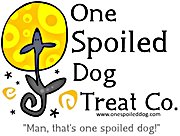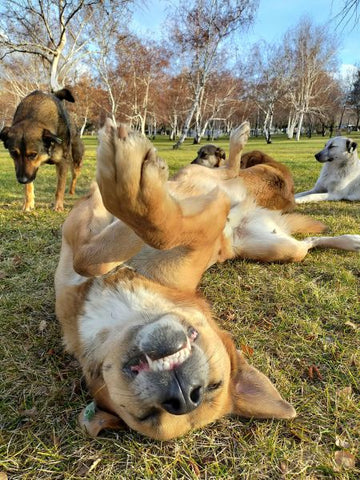As pet parents, ensuring our dogs stay fit and healthy is a top priority. Just like humans, dogs can face weight challenges, especially when calorie-dense treats become a frequent indulgence. But treats are an essential part of a dog’s life—they’re vital for training, bonding, and showing love. The good news? You don’t have to sacrifice treat time to keep your pup’s weight under control. Low-calorie treat options allow you to reward your dog while maintaining their health.
In this guide, we’ll explore why weight management matters, the role treats play in a balanced diet, and share a variety of low-calorie options to keep your dog happy and healthy.
Why Weight Management Is Important for Dogs
Obesity in dogs is on the rise. According to the Association for Pet Obesity Prevention, more than 50% of dogs in the U.S. are overweight or obese. Excess weight can lead to a range of health issues, including:
- Joint Problems: Added stress on joints increases the risk of arthritis.
- Heart Disease: Extra weight puts strain on the cardiovascular system.
- Diabetes: Obesity raises the likelihood of developing diabetes.
Additionally, overweight dogs often have less energy, making them more prone to inactivity and other health complications. The good news? Weight management is achievable with a combination of portion control, regular exercise, and a balanced diet—including the right treats.
Why Low-Calorie Treats Matter
Low-calorie treats allow you to reward your dog without exceeding their daily calorie needs. Many traditional treats are calorie-dense and packed with sugars and fats, contributing to weight gain over time. Low-calorie options, on the other hand, are often made with wholesome ingredients like lean proteins, fruits, and vegetables, providing a healthier alternative.
These treats are also ideal for training, as they can be given frequently without adding too many calories. The key is balance: treats should complement your dog’s meals, not replace them. Let’s explore some low-calorie options your dog will love.
1. Carrot Sticks: Crunchy and Nutritious
Carrots are a go-to low-calorie treat. Packed with fiber, beta-carotene, and vitamins, they’re both healthy and satisfying. Plus, their crunchy texture makes them a favorite for dogs who enjoy a bit of bite in their snacks.
Why They’re Great:
- Low-Calorie: One medium carrot has only about 25 calories.
- Nutritious: Rich in vitamin A, which supports eye health, and helps scrape plaque off teeth as your dog chews.
How to Serve: Cut carrots into bite-sized pieces or offer them whole for larger dogs to gnaw on. This affordable, healthy option satisfies cravings without the guilt.
2. Apple Slices: Sweet and Refreshing
Apples are another excellent low-calorie option. Their natural sweetness makes them appealing, while their fiber content helps regulate digestion. Just remember to remove the seeds and core, as these can be harmful to dogs.
Why They’re Great:
- Low-Calorie: A medium apple contains about 80 calories, but slicing it into small portions keeps servings light.
- High in Fiber: Supports digestion and helps your dog feel full.
Pro Tip: Freeze apple slices for a refreshing treat during hot weather.
3. Green Beans: A Low-Calorie, High-Fiber Option
Green beans are a fantastic veggie treat for dogs on a weight management plan. Their fiber content keeps dogs satisfied, while their crunchiness makes them enjoyable.
Why They’re Great:
- Low-Calorie: One cup contains about 30 calories.
- Nutrient-Rich: Packed with vitamins A, C, and K, plus minerals like manganese and folate.
How to Serve: Offer green beans fresh or cooked without seasoning. They’re perfect for training or as an everyday snack.
4. Freeze-Dried Meat: Protein Without the Calories
For dogs who prefer meaty treats, freeze-dried options are a great choice. Made from lean proteins like chicken, turkey, or salmon, these treats are nutrient-dense and low in calories.
Why They’re Great:
- Low-Calorie: A few pieces go a long way in satisfying your dog’s cravings.
- Protein-Packed: Supports muscle maintenance and provides lasting energy.
What to Look For: Choose freeze-dried treats with no added preservatives or artificial ingredients for a healthy, natural snack.
5. Sweet Potato Chews: A Healthy Chewing Alternative
Sweet potatoes are an excellent substitute for traditional chews like rawhide. They’re naturally sweet, high in fiber, and gentle on your dog’s digestion.
Why They’re Great:
- Low-Calorie: A medium sweet potato has about 100 calories, but when sliced and dehydrated, it becomes a low-calorie, chewy treat.
- Nutrient-Dense: Loaded with beta-carotene and vitamins A and C, which boost immunity.
How to Serve: Dehydrate sweet potato slices for a chewy, satisfying snack that also promotes dental health.
6. Commercial Low-Calorie Treats
If you’re short on time, many store-bought treats are designed specifically for weight management. Look for options labeled "low-calorie," "grain-free," or "weight management," and choose those made with natural ingredients.
Top Picks for 2025:
- Wellness CORE RawRev High-Protein, Low-Calorie Treats
- Zuke’s Mini Naturals (Salmon)
- Blue Buffalo Wilderness Trail Treats (Salmon)
These treats combine great taste with fewer calories, making them perfect for guilt-free rewards.
Conclusion
Maintaining your dog’s weight doesn’t mean cutting out treats altogether. Low-calorie options allow you to reward your pup while keeping their health and happiness in mind. Whether you opt for fresh fruits and vegetables, lean proteins, or thoughtfully chosen commercial treats, there’s no shortage of ways to make treat time both fun and healthy.
By incorporating low-calorie treats into a balanced diet, you can help your dog stay fit, active, and full of tail-wagging joy. After all, a healthy dog is a happy dog—and isn’t that what we all want for our furry friends?

